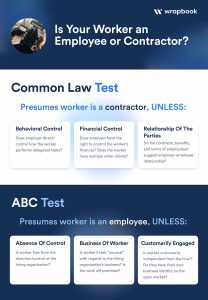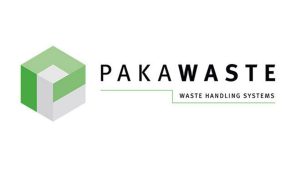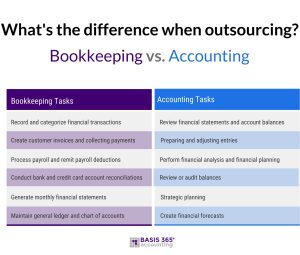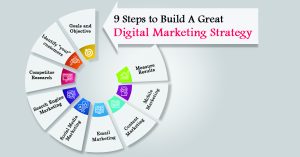2021 PMP Learning Plan: 7 Steps to Successful PMP Examination

If you have completed the research on PMP examination, you will realize that this is a big goal. Project management experts (commonly known as PMP) are regarded as the gold standard in the project management field, and are the honorary badges of those who show commitment, discipline, concentration and effort when obtaining the dream position.
That is to say, there are more than one million people with PMP, so do you. What you need to do is to make a plan, how you will get there and follow it.
Whether you are a novice in the field of project management or a person with many years of project management experience, having a PMP learning project will help you get a PMP. When you want to learn PMP and business commitment, planning becomes more important. PMP exam preparation is considered as an exercise in managing your own projects and testing skills.
The 7th stage of the coveted PMP title.
Step # 1: Get a general idea of the time and effort required to prepare for the PMP exam.
The first step in completing all tasks or plans is to evaluate the required content. For the PMP exam, understand the content and form of the exam. If you understand the width of the exam materials in the exam, you can plan more realistically. However, the average PMP exam preparation time is 2-3 months or about 80-100 years. Time learning and practice. In order to understand how many months it will take, you need to compare the total time you can spare in a week with the total time you need to prepare. Please remember to keep your plan high and keep flexibility in your schedule. One day, because of professional and personal commitments, you can’t do without time to learn. Yes, too.
Stage 2: Examination end date and examination preparation plan
After mastering the materials and exam structure, please know when you want to take the exam and how to prepare for it. It does not mean making an appointment for the exam, but making a plan one week or one month before preparing for the exam. When approaching the examination content, there are different ways to do this. For example, some people like to study in the classroom environment, so they take physical or virtual PMP courses. Other busy people may not be able to attend classes for five consecutive days. You may prefer a course with your own schedule. No matter what option you choose, the option you choose must be consistent with the learning method, cost and schedule. For example, several busy experts have successfully used PMP exam preparation and PMP e-learning courses.
Step 3: Read the reference materials and PMBook
Patience is the key to preparing for the PMP exam. The concept of PMBook and auxiliary materials is very comprehensive, and you need to focus on reading details. For example, when you first read a PMBook, you might panic about the structure. Therefore, it is a better way to decompose the examination content and process one at a time in PMBOK. For example, you can read the chapter of the PMBook, view the video of the PMP e-learning course, and solve the problems at the end of the chapter to supplement.
Step 4: Prepare for agility and predictability project management
By the end of 2020, the content of PMP will be mainly predictive. From 2021, the PMP examination will include prediction and agility concepts. Therefore, if you have accumulated most experience in a waterfall environment, agility seems to be a new topic. However, with the release of PMBOK version 6, PMI also released the PMI Agility Practice Guide, a 210 page book that describes various agility topics written in cooperation with the Agility Alliance. Therefore, in addition to the PMBook, it is also important to read the PMI Agile Practice Guide. Because nearly 50% of the current PMP exam is agile. You can also read the scrum guide for free. Because scrum is a widely used agile framework, most of the agile problems in the PMP exam are in scrum.
Step 5: Sufficient practice exams and questions
PMP testing is actually a test of the ability to understand problems and relate to project management concepts. In addition, the examination time is 4 hours, and most of the questions are conditional. In addition, some questions in the exam may be very long, requiring good reading speed and understanding ability. As the saying goes, practice makes perfect. It is important to practice fully before the exam. Most people who use PMP are no longer used to sitting for a long time in the exam, so it is important to try to experience this situation and adapt to the exam.
In addition, different simulation problems from different sources can be practiced, and different experimental viewpoints can be put forward. It is worth noting that no matter which resource you choose, you must make a good combination of predictability and agility. You need to solve at least 4-5 mock exams, with an average score of 75-80% to be confident of taking the actual exam.
Step 6: Check the wrong answers to the chapter tests and simulation tests
If we do not learn from the mistakes, it is not enough to just understand the materials and solve the simulation test paper. Even if you do well in the practice test, you must review all incorrect answers. In this way, you can not miss the concepts you must know in the exam, and finally add points in the actual exam. When reviewing the wrong answers, it is best to refer to the PMBOK section provided in the explanation of the answers. This helps to find out the cause of the wrong choice and strengthen the correct answer. Follow this procedure to resolve each section or simulation test.
Step 7: Reread PMBook and solve other problems
PMBOK is a masterpiece. It is almost impossible for you to retain information after only reading it once. For 10 knowledge fields and 49 processes, it is difficult to remember all processes or knowledge fields after a little bit. In addition, project management is a comprehensive discipline, and various courses, tools and technologies are interrelated. Therefore, each time you read PMBook, you will find new links between multiple processes and knowledge areas to enhance your understanding of the topic, provide help in answering questions, and further improve your overall performance. In this step, please continue to solve simulation problems to ensure how much your understanding has improved.
Some additional skills for successful PMP testing
In addition to the above steps, there are other tips to help you prepare for the PMP exam.
Tip 1: Review the glossary in PMBook and Agile Experiment Guide
Although many PMP candidates ignore the vocabulary when preparing for the exam, the vocabulary is an excellent resource to help them become familiar with some definitions, terms and abbreviations used in PMBOK. The byte size can be learned at any time by converting the vocabulary into an extraction card.
Tip 2: Join a study group to stimulate more motivation
Preparing for the PMP exam is a difficult task that requires weeks or even months of effort and investment. Therefore, it is common to lose power on the way. Especially when you are alone in the beautiful bank. It may be a good idea to join a local or online learning group. Not only are you tired of the energy of other candidates, but you can also learn about other resources that can be used in PMP exam preparation and learn from the experience and mistakes of others.
Tip 3: Use debit card
Using PMP extraction card is a good way to decompose PMP content into micro learning artifacts. Draw card is Q& A-base, definition, acronym or formula related to PMP exam. The use of pick-up cards is portable, and the advantage is that you can learn quickly as long as you have time. If you find a paper or application pick-up card recently, or want to go further, you can make your own pick-up card, especially the content that is difficult to remember.
The PMP exam is difficult, but not impossible. Many candidates have successfully passed the PMP exam through the above strategies.
But it is also important to remember that everyone is different and there is no size for everyone. Get clues from various sources at any time, and design a customized PMP learning plan. Finally, no matter what course you follow, the core elements of dedication, effort and effort pave the way for successful passing the PMP exam.








